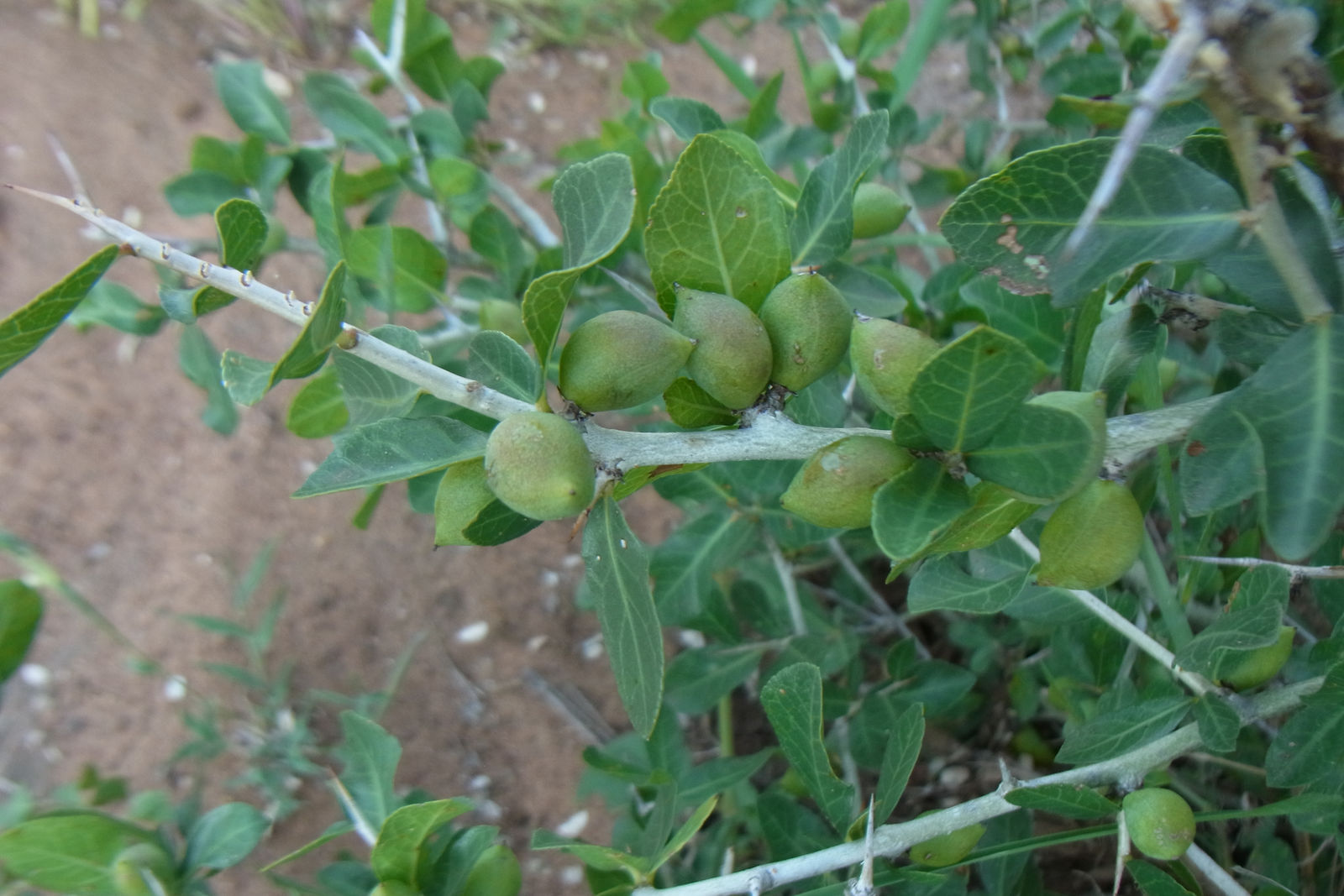Corkwood (Kanniedoodboom) #
Commiphora pyracanthoides

Quick Info #
- Distribution & habitat: Transvaal – low-lying areas and dry bushveld
- Family: Burseraceae
- Florescence: September to October
- Fruiting: roughly November to March
- Leaf habit: deciduous
- Name origin: the tree is called “Firethorn corkwood” due to its orange-red leaves in the dry season
- Other names: chitonto (Bemba), commiphora, firethorn corkwood, nsofwa (Kunda)
Description #
The corkwood grows into a dense shrub or a smallish tree. The small, reddish flowers grow in clusters, and so do the blue-green, hairless leaves. The greyish-green, smooth bark peels off in small, paper-thin flocci.
The berries are ovoid and glossy. They’re rather small at around 1 cm long. They have sharp tips and split open. The seeds inside are enjoyed by birds.
The corkwood is very closely related to Commiphora glandulosa.
Uses & Ecology #
The roots are juicy, and so they are dug up by various animals. The twigs can be used to start a fire.
The corkwood has remarkable ornamental value. It is also said to have a number of traditional uses.
References #
- Coates Palgrave, K. & P. & M. (1989) Die Suid-Afrikaanse Boomgids. Johannesburg: Central News Agency.
- Lungwa Valley Trees. (n.d.) Commiphora pyracanthoides. Available at: https://sites.google.com/site/luangwatrees/home/trees-with-clustered-leaves/commiphora-pyracanthoides (Accessed: 7 October 2025)
- Random Harvest (n.d.) Commiphora pyracanthoides. Available at: https://www.randomharvest.co.za/South-African-Indigenous-Plants/Show-Plant/PlantId/656/Plant/Commiphora-pyracanthoides (Accessed: 7 October 2025)
- Van Wyk, P. (1988) Veldgids tot die Bome van die Nasionale Krugerwildtuin. Cape Town: Struik Publishers.
Caution: Consult a qualified health practitioner before considering medically using or ingesting any plant parts. Any mentioned traditional uses are based on cultural practices and anecdotal evidence. They are not necessarily clinically proven or supported by modern scientific studies.